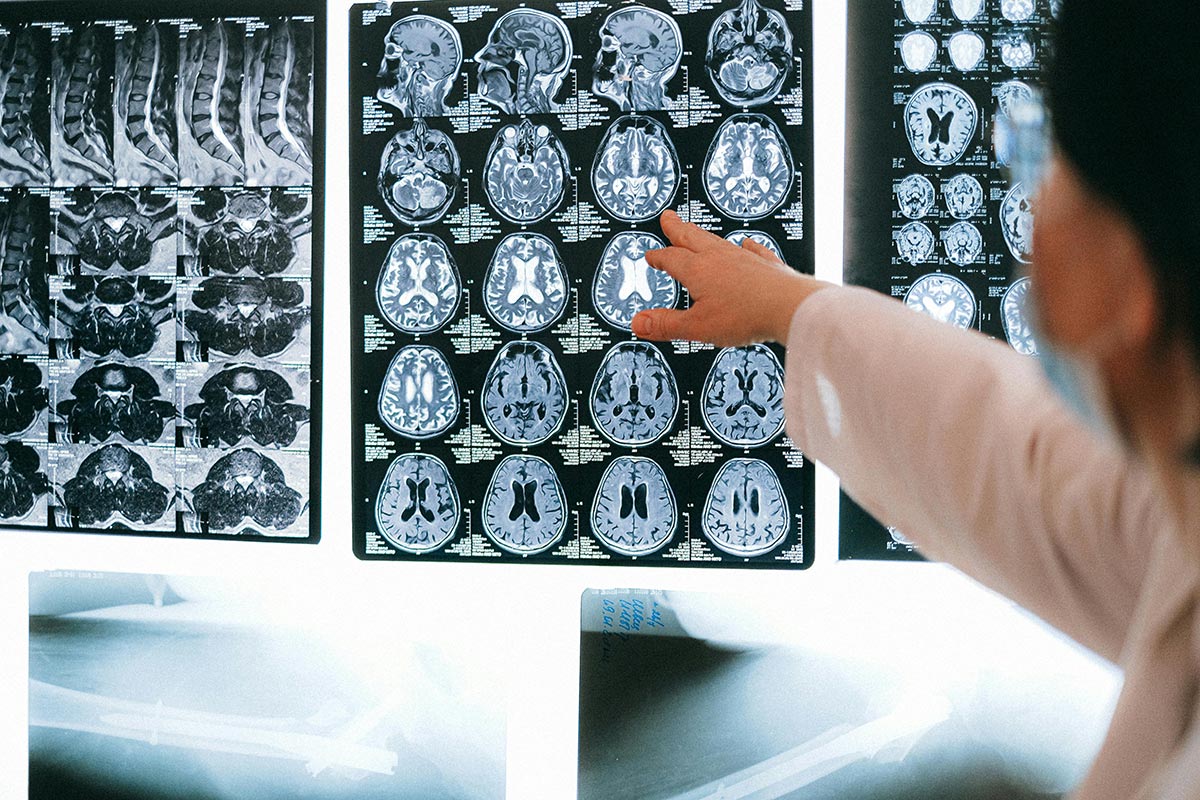
Raising Awareness on Addiction
Importance of Addiction Awareness
Addiction Awareness Month is observed in September in the United States and plays a crucial role in reducing stigma, educating the public, and providing support to individuals and families affected by addiction. One of the primary goals is to shed light on the complexities surrounding addiction. This initiative encourages conversations, educational campaigns, and public events to increase understanding and reduce stigma related to addiction (Northstar Behavioral Health).
Creating awareness can lead to significant changes in how society perceives addiction. By addressing misconceptions and promoting accurate information, individuals who struggle with addiction may feel empowered to seek help. It also cultivates an environment that supports recovery and healing, which is vital for individuals and families impacted by addiction.
| Key Goals of Addiction Awareness Month |
|---|
| Reduce stigma associated with addiction |
| Educate the public about the realities of addiction |
| Provide support networks for individuals and families |
A Look Back: History of Awareness Efforts
The history of Addiction Awareness Month sheds light on its origins and evolution. This month has emerged as a platform for sparking conversations and promoting awareness regarding addiction. Initially focused on recognizing the challenges faced by individuals suffering from addiction, it has gradually expanded to emphasize the importance of support systems and resources available.
Over the years, initiatives associated with this month have included a variety of public events, educational seminars, and outreach programs aimed at reducing the stigma surrounding addiction. These efforts have increasingly become significant in promoting discussions about various aspects of addiction, such as its impact on mental health, social relationships, and community dynamics.
Addiction Awareness Month not only highlights the struggles of those dealing with addiction, but also encourages stakeholders—including healthcare professionals, advocacy groups, and policymakers—to work collaboratively. This teamwork aims to foster a more compassionate society where individuals feel safe to discuss their addiction issues and seek the help they need (Destinations for Teens). By emphasizing the need for holistic approaches, the month underscores the interconnectedness of mental health support, peer counseling, and community engagement in effective addiction treatment.
National Initiatives for Substance Use Awareness
Awareness and education are central components in the fight against substance use disorders. Several national initiatives contribute significantly to this effort, with a focus on prevention and recovery.
Prevention Week and Its Impact
National Prevention Week is an annual event dedicated to encouraging communities to participate in substance use prevention and mental health promotion. This initiative is aimed at preventing substance use and promoting mental wellness through a nationwide effort. It emphasizes that prevention works and supports the health and well-being of communities (SAMHSA).
The impact of National Prevention Week is noteworthy, as it engages schools, organizations, and communities in dialogue about the importance of prevention. By providing resources and activities, it encourages people to take an active role in safeguarding their communities against the detrimental effects of substance use.
| Year | Events Organized | Participants Engaged |
|---|---|---|
| 2021 | 2,000+ | 100,000+ |
| 2022 | 2,500+ | 120,000+ |
| 2023 | 3,000+ | 150,000+ |
Recovery Month Advocacy
National Recovery Month, observed every September, promotes awareness of substance use treatment and recovery practices. Since its inception in 1989, Recovery Month has focused on supporting the recovery community and recognizing the efforts of service providers and communities that enable recovery (SAMHSA).
This month serves as a crucial time for raising public awareness regarding mental health and addiction recovery. Activities include local events, educational workshops, and a national observance, encouraging collaboration among public and private entities. These initiatives aim to celebrate long-term recovery and provide individuals with the necessary tools to overcome substance use challenges.
| Year | Recovery Events Held | Community Groups Involved |
|---|---|---|
| 2021 | 700 | 300 |
| 2022 | 800 | 400 |
| 2023 | 1,000 | 500 |
National Prevention Week and Recovery Month are key components of a larger effort to increase awareness and understanding of addiction and its impacts. They highlight the importance of combining community engagement with education, emphasizing that effective strategies exist to combat substance use disorders and promote wellness. For more insights into addiction, including its effects on the brain, visit our article on addiction on the brain.
Addiction Awareness Month
Understanding the Purpose
Addiction Awareness Month is an annual observance typically celebrated in September. This month serves as a vital platform where organizations, communities, and individuals unite to raise awareness about addiction and its impacts. It emphasizes the importance of prevention, treatment, and recovery, transforming public perceptions of substance abuse disorders from stigma to empathy. The goal is to encourage open conversations and support for individuals affected by addiction (Attain Behavioral Harmony).
The event aims to educate the public about the nature of addiction, the associated risk factors, and the critical role of early intervention and treatment. This understanding fosters an environment of empathy and support, showcasing addiction as a disease rather than a moral failing.
Activities and Initiatives
During Addiction Awareness Month, numerous activities and initiatives are organized to enhance public understanding and reduce stigma. These activities typically include community walks, rallies, workshops, training sessions, and social media campaigns. Each initiative aims to inform individuals about addiction and connect them with available resources.
| Activity Type | Description |
|---|---|
| Community Walks | Organized events to raise awareness through public participation. |
| Rallies | Gatherings that promote solidarity and support for individuals in recovery. |
| Workshops | Educational sessions focusing on addiction and recovery strategies. |
| Training Sessions | Programs aimed at teaching skills for prevention and support. |
| Social Media Campaigns | Online initiatives to spread information and engage the community. |
These efforts are designed not only to spark conversations around addiction but also to provide accessible information on resources and support networks. For more details on the mental effects of addiction, check out our article on addiction on the brain. By participating in these initiatives, communities can help individuals overcome the hurdles associated with addiction and encourage those on the recovery journey to reach out for help.
Ultimately, Addiction Awareness Month serves as an opportunity for education, empathy, and action in addressing addiction and its far-reaching effects on individuals and society.
Spreading Awareness Effectively
Raising awareness for addiction is crucial in creating a supportive community and promoting well-being. Effective strategies for spreading awareness include educational campaigns and community engagement.
Educational Campaigns
Educational campaigns play an essential role in informing the public about addiction and its implications. These campaigns focus on providing accurate information about substance use disorders and debunking common myths surrounding addiction. For instance, many people may not understand the distinction between habit vs. addiction or whether addiction is a disease.
| Key Topics Addressed | Purpose |
|---|---|
| Myths & Misconceptions | To clarify false beliefs about addiction (myths & misconceptions about addiction) |
| Substance Use Disorders | To educate on the effects and implications of drug and alcohol use |
| Prevention Strategies | To promote techniques to avoid substance misuse and develop resilience |
Supporting educational information can be found through reliable sources such as the Substance Abuse and Mental Health Services Administration (SAMHSA), which emphasizes prevention and early intervention strategies to help mitigate the impacts of substance use disorders (SAMHSA).
Community Engagement Strategies
Community engagement is vital for building support networks that can effectively address addiction. Strong support systems help reduce the risks associated with substance abuse. Activities such as community events, workshops, and local initiatives can foster a sense of unity and encourage proactive involvement in prevention efforts.
| Engagement Strategies | Benefits |
|---|---|
| Community Gardens | Foster connections while promoting healthy lifestyles (Jackson House Rehab) |
| Local Support Groups | Create safe spaces for individuals to share experiences and seek help |
| Awareness Walks | Raise visibility for addiction issues and encourage participation in local resources |
These strategies emphasize that prevention works by enhancing protective factors and diminishing risk factors at various societal levels while supporting mental health and community health outcomes (SAMHSA). Engaging the community in a supportive environment deters unhealthy coping mechanisms, ultimately leading to a healthier society.
Support and Resources
Awareness is just the first step in addressing addiction. Support and resources are critical for individuals struggling with substance use disorders and their families. This section covers the availability of counseling services and community support networks.
Counseling Services Availability
Counseling plays an essential role in the treatment of addiction and improving mental health. A variety of counseling services are available to offer assistance and guidance tailored to individual needs. These services may include individual counseling, group therapy, family counseling, and specialized programs for different substance use issues.
The availability of counseling services may vary by region, but many organizations and clinics provide resources to help individuals navigate their recovery journey. The Substance Abuse and Mental Health Services Administration (SAMHSA) offers toolkits and resources to promote awareness during events such as Substance Use Prevention Month (SAMHSA).
| Type of Counseling Service | Description |
|---|---|
| Individual Counseling | One-on-one sessions with a licensed therapist to address personal substance use issues. |
| Group Therapy | Facilitated sessions with peers facing similar challenges, allowing for sharing and support. |
| Family Counseling | Involves family members to address the dynamics of addiction and improve communication. |
| Specialized Programs | Tailored programs for specific substances or populations, such as adolescents or veterans. |
Community Support Networks
Community support networks are vital for creating a sense of belonging and providing resources for recovery. Strong support systems contribute to reducing the risk of substance abuse. Engaging in community-building activities fosters a supportive environment that can deter unhealthy coping mechanisms such as drug or alcohol abuse (Jackson House Rehab).
Support groups, local recovery organizations, and community outreach programs help individuals connect with others who have similar experiences. These networks often provide information about available resources and programs aimed at supporting those grappling with addiction and their families.
| Type of Community Support Network | Description |
|---|---|
| Support Groups | Peer-led groups for sharing experiences and encouragement, such as Alcoholics Anonymous (AA) or Narcotics Anonymous (NA). |
| Recovery Organizations | Local non-profits that offer resources, events, and workshops for individuals in recovery. |
| Community Outreach Programs | Initiatives aimed at educating the public about addiction and providing assistance to affected individuals and families. |
These support systems and counseling services are vital components of the efforts around what is Addiction Awareness Month? as they offer not just resources but also hope for healing and recovery. The collaboration between individuals, communities, and organizations can drive meaningful change in addressing addiction effectively.
Collaboration for Change
Stakeholder Involvement
Effective strategies for raising awareness and supporting recovery during Addiction Awareness Month require the active participation of various stakeholders. These include healthcare professionals, advocacy groups, government agencies, and community organizations. By working together, stakeholders can create a unified front that emphasizes the importance of addiction recovery and prevention.
The Substance Abuse and Mental Health Services Administration (SAMHSA) encourages collaboration with public and private entities to strengthen initiatives during this month. Initiatives and grant funding are often timed to coincide with Addiction Awareness Month to boost awareness and create a supportive community environment (SAMHSA). Strong support systems can significantly reduce the risk of substance use, highlighting the need for an integrated approach among various groups to foster a sense of community and understanding.
| Type of Stakeholder | Role in Awareness Month |
|---|---|
| Healthcare Professionals | Provide resources and treatment information |
| Advocacy Groups | Raise public awareness and offer support |
| Government Agencies | Implement policies and fund programs |
| Community Organizations | Engage in grassroots efforts and connect with locals |
Holistic Approach Integration
Integrating a holistic approach to addiction treatment is essential for effective support during Addiction Awareness Month. This means recognizing that addiction impacts not only the individual but also their families and communities. A comprehensive strategy should include mental health support, peer counseling, and community engagement to address the multifaceted nature of addiction.
Community building activities, such as community gardens and neighborhood directories, have shown to decrease the risk of substance abuse. These initiatives foster a supportive atmosphere, making it easier for individuals to seek help and engage with resources.
All stakeholders can benefit from integrating mental health support within addiction recovery strategies. Understanding the relationship between mental health and addiction can offer a more comprehensive method of treatment, encouraging those in need to seek help not just for addiction but for overall wellness. Resources on addiction on the brain and the consideration of whether addiction is a disease can enhance awareness for all involved.
Emphasizing collaboration among various sectors during Addiction Awareness Month leads to more effective communication, community support, and overall understanding of addiction. By fostering a sense of unity, stakeholders can promote recovery and help mitigate substance-related issues in society.
.svg)





